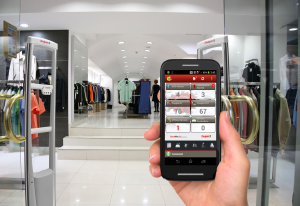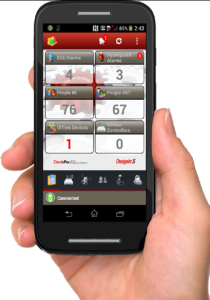 I thought I would provide you with information to assist you in making decisions regarding the purchase or maintenance of a security system for your property. The information provided will help cut though the “fog” of choices regarding alarm systems.
I thought I would provide you with information to assist you in making decisions regarding the purchase or maintenance of a security system for your property. The information provided will help cut though the “fog” of choices regarding alarm systems.
I have over 35 years of experience in both commercial and military property protection. My Bachelor’s Degree is in Industrial Security and my knowledge includes physical security, design of alarm solutions and installation. I am also a licensed alarm tech.
When selecting a security system for a commercial space, you do not have to spend a great deal of money. However, you need to be cautious of putting in a system that is so inexpensive that you are really only getting a false sense of security. If you purchase smart, you will have a good system that will last for years and provide excellent coverage at a very reasonable price.
Choosing a provider – There are so many choices that it is usually overwhelming. Ranging from large national chains to single man shops. What is the best? Well, there is no answer that fits everyone. But you should consider the following:
How reliable is the company? How long have they been in business?
With large national chains, you tend to be just a number despite their advertising claims.
With some small operations you have to be concerned, if they will be there next year.
Generally regional chains and smaller operations are going to be more attentive to your needs.
Be VERY cautious of alarm sales people. Most of the time they are focused on quota and really do not care, if you are properly protected or not. Most do not have practical knowledge of physical security, they are salesmen. Make sure you get what is best for you not for the sales person who is trying to make quota and/or selling you components that are add-ons you really do not need.
How long is the contract? 5 years is WAY too long of a term. A good contract length is 2-3 years. Remember, if they cannot hold you with good performance and service, they will tend to try to get a longer contract. Length of contract is negotiable even with large companies. Besides where will you be in 5 years? Will your company have outgrown your current space and you have to move? An assurance of “oh if you move we will move with you” may sound great but what if they have done a poor job? Do you want to continue that relationship?
Watch out for companies that have wording in their contract that automatically raise your monitoring charge usually on an annual basis. Many times it is explained away as a “cost of living” type charge. It is just an underhanded way to get more money out of you.
I will discuss equipment later in this document but keep this in mind: A trick that the large companies do, is sell you the alarm control. But it is proprietary and THEY are the only company that can program it. This keeps you locked into them forever. No one else can monitor or service it. Insist on a NON-Proprietary alarm control.
Are they insured? Get a copy of the insurance and insist on an updated copy every year. Better yet have them list you on their policy. Is their coverage adequate for a loss due to their negligence? Keep in mind that alarm companies are NOT insurers. They will not insure your life or property losses. That is what your insurance is for. But if they make a serious error or commit Errors and Omissions (E&O), you need them to cover their mistake. Have your insurance agent review the coverage document provided to you. Do this up front. Like my Attorney says to me “Let’s get the paperwork right at the beginning because I have never seen anyone wear their wedding dress to the divorce”.
Are they licensed? Check the Secretary of States web site. Are they properly licensed for low-voltage alarms, are there complaints….?
System Design – Unless you want a lot of bells and whistles you can keep It pretty simple. Here are the key items you should have:
Alarm Control (brains of the system). See above about proprietary vs non-proprietary.
Alarm Keypad near the front door. This is how you arm and disarm the system. In my experience a keypad with an “alpha” display is best. This usually costs a bit more but instead of it displaying a zone number such as “Zone 08” it will for example say “Back Door Left”. This is much easier to deal with when there is a problem. And there will be a problem usually late at night when you need clear information. If you also access your suite from several doors, then you want a keypad at each door for your convenience.
Door Contacts. Contact every exterior door both personnel and overhead doors whether you use them or not. They are a “hole” in your wall.
Glass Break Detectors should cover EVERY bit of your glass that is accessible. This is the most likely way a burglar will break in. Usually one glass break detector in every office with any windows will take care of it.
Motion Detectors. You should have at least one. This should be in a hallway or other area that would make it very difficult for someone to move very far without tripping it. You do not need to cover every square foot. That is overkill and not generally necessary. The exception would be, if you have very valuable supplies, equipment or other assets you need protecting. Then a motion detector covering that area is warranted.
Fire Protection is a nice thing to add. This may help reduce your insurance premiums. Keep in mind that you may be in a building that has a sprinkler system. What you should ask is that sprinkler system “monitored by a central station” or is it simply going to ring an outside bell if activated. From a fire perspective you want it monitored. However, what happens if there is a water flow in the middle of the night or on the weekend and no one discovers it until business hours? Monitoring will keep your losses in merchandise and structure more limited.
Burglary sirens are nice but do not go crazy. One siren on the inside is enough. Keep in mind that almost every keypad has a built in siren.
Automatic Testing – This is one of the most overlooked issues. If your alarm system is not checking in with the alarm companies central station on a routine basis then how would you ever know if it stops working? This happens a lot! Alarm systems are electronic and mechanical devices that do break. An electrical surge from a phone line connection or 110 Volt power happens very frequently. If your systems communications go down you may never know it. It will not show up on the keypad.
Look for a “Supervised, Weekly Timer/Test”. This is an automated signal that your alarm control is programed to send every week at the exact same time. The central station computer is watching for this signal and if it does receive it then the central station computer notifies an operator and they then notify you. This process is all automated and normally is programed to happen in the middle of the night. The central station will then notify you the next day during business hours. If you are really concerned, then you may wish to select a daily timer/test signal.
Timer/Test signals are very inexpensive to you and many companies provide a weekly one free of charge.
Notification of an Alarm – This is the call list that the central station uses to get a hold of you in the event of an emergency or a problem. They cannot help you, if they cannot reach you. Keep this list up to date. Some of the better alarm companies can send you an automated email several times a year with your current call list. This reminder helps you to keep the list current. The problem with a call list is that it is out of sight, out of mind. Without these reminders you usually do not know until there is a problem. You should also have the alarm company send you an automated e-mail whenever there is an event such as an alarm, timer/test fail, maintenance problem…. Those should also be included in your service at no charge.
Reports – Another often overlooked feature is an open/close report. Your alarm company can program your alarm control to instantly send a signal to the central station each time the system is armed or disarmed. Your system tells the central station which employee armed/disarmed and at what date/time. A summary report is sent to you once a week by e-mail. You should tell them you want an “all activity” report. This should not cost any more. That way you will also see alarms, troubles…. In addition to the opens/closes. This is much easier for you to read. Most of us only need a “log only” report. The log only version is less expensive because there is no intervention by a central station operator.
This report is a very important tool for business owners and managers. It will let you know who is coming in and when which is a good tool to assist you in tracking employee time when you are not there. It will also alert you to someone coming in after hours. Use this report as a proactive tool. If something falls outside the norm then question the employee about it. This lets them know you are aware and will help to prevent issues such as employee theft.
Alarm System Codes – Every employee should have their own code. Employees should not be allowed to share codes. Tell your employees that they are accountable for what happens with their code. If a theft or incident occurs because they gave their code to someone or someone saw the code, then they will be held accountable. Codes should never be simple such as-1234, 2468, a year, birth month/year combination, phone number…. Anything obvious. You might try using a person’s last four digits of their SSN. People tend to protect that number. Let them know that if their code is compromised for any reason, they must notify you and you will simply change it.
Transmission via cellular or internet – I personally love this feature. Most of the problems with alarm systems involve phone line issues. I think cellular is best. A cellular signal cannot be blocked due to a cut phone line or phone company trouble. Most alarm system cellular units hit at least two towers and many times three. Cellular connections are VERY fast. It is also more reliable than your voice cell service.
You can also send signals via the internet. This is nice because like cellular you eliminate a hard wired phone line and is more economical. But an internet connection is vulnerable to interruption and being cut just like a phone line.
There are a lot of other great services that your alarm company can provide you to fit your individual needs: supervised open/close reports, wireless sensors, video tied to the alarm system, remote connectivity to your alarm system via PC, tablet or smart phone and much more. This allows you to access your alarm or view video anywhere in the world. Many of these are not only convenient but critical in business and asset protection.









